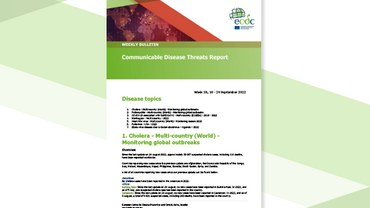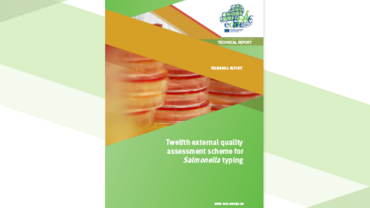External quality assessment scheme for antiviral susceptibility detection in influenza viruses
The first European external quality assessment exercise for antiviral susceptibility detection in influenza viruses was carried out during winter 2010/11. Twenty laboratories from 16 European countries participated in the exercise. All participating laboratories returned good results from the genotypic detection of the H275Y mutation in influenza A(H1N1)pdm09 virus (90% correctly reported consensus result), demonstrating that these laboratories have rapidly and successfully implemented the new assays since the emergence of the pandemic virus in April 2009.
Twelve laboratories reported phenotypic testing results, while eight laboratories did not, possibly due to limited resources or lack of technical support for this test. Areas of difficulty included influenza A(H1N1)pdm09 mixture analysis, analysis of NAI-resistant H3N2 and influenza B virus.
The interpretations of genotypic test results varied widely (20–95% correct match to consensus), compared with the interpretations of phenotypic results, which were more consistent but still showed some variation (67–100% correct match to consensus).
The provision of guidelines on the interpretation of resistance mutations and phenotyping results would help to improve consistency. Other strategies towards achieving consistency between laboratories include the harmonisation of baseline values and the provision of a reference set of viruses.
Executive summary
This report describes the first European external quality assessment (EQA) exercise for antiviral drug susceptibility testing of influenza viruses.
Twenty different laboratories from 16 European countries participated in the exercise carried out during winter 2010/11. Participants tested samples of recent influenza A and B viruses containing substitutions known to confer resistance to antiviral drugs. In addition, they provided an interpretation of variations in the results for genotypic and phenotypic testing in terms of virus susceptibility to antiviral drugs.
The results of the exercise show good results from the genotypic detection of the H275Y mutation in influenza A(H1N1)pdm09 virus. The proficiency for detection of a mixture of resistant and sensitive A(H1N1)pdm09 viruses was lower. Areas of difficulty included influenza A(H1N1)pdm09 mixture analysis, analysis of NAI-resistant H3N2 and influenza B virus. Variation between genotypic and phenotypic susceptibility testing was observed.
The report concludes that the following strategies would help to improve consistency:
- provision of guidelines on the interpretation of resistance mutations and phenotyping results;
- harmonisation of baseline values;
- provision of a reference set of viruses.
Future capacity building should focus on the development of widespread capability for genotypic and phenotypic detection of oseltamivir resistance in A(H1N1)pdm09 and other human influenza viruses.
The results of this exercise will be used to guide the development of the network of laboratories and promote harmonisation of antiviral susceptibility testing, data interpretation and reporting.





